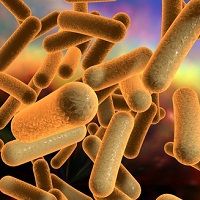Article
Potential Future Therapy for Clostridium difficile Infections
Author(s):
A more effective treatment for Clostridium difficile (C. diff), or hospital-acquired diarrhea, may be on the horizon.

A more effective treatment for Clostridium difficile (C. diff), or hospital-acquired diarrhea, may be on the horizon.
According to findings published in the journal Nature Microbiology, researchers from Vanderbilt University Medical Center determined that the crystalline structure of a toxin found in the C. diff bacteria damages a patient’s colon. They reported that discoveries such as these could pave the way for therapeutic targets and preventative methods to avoid the fatal consequences of C. diff infection.
“This is basic science,” senior author D. Borden Lacy, PhD explained in a press release. “I think it gives a framework for understanding how, once you do have an infection, the toxins are causing the disease.”
C. diff produces two similar toxins - toxin A and toxin B - which are similar to other toxin-mediated diseases like anthrax, diphtheria, and botulism. However, C. diff is unique in that there is no vaccine or treatment that can block the bacteria-produced toxins.
The bacterium has become a major public health concern, because there is no effective therapy.
An estimated 500,000 US patients were infected in 2011, of which approximately 29,000 people died from resulting intestinal complications, such as a form of colitis, within a month of the initial diagnosis.
The research team found the mechanism within C. diff’s toxin B that kills cells in 2012 and 2013. In January 2016, the investigators reported the identification of the cellular receptor that binds with the toxin.
After the toxins bind to the receptors, a tiny vesicle called an endosome absorbs them, reaching the cell membrane through pores, and the toxins release pieces of themselves with two enzymatic activities into the cell.
The enzymes then modify the activity of the cell’s proteins, which end up destroying the cell.
In this study, the researchers produced the crystal structure of C. diff toxin B and used a streamlined x-ray of a specific wavelength on the crystal. The diffraction pattern that was generated was converted in a computer model to replicate the model of the toxin.
One small section of the toxin is “highly conserved,” the researchers explained in the press release, which they continued indicates that the sequence of amino acids is identical to the sequences in other Clostridium bacteria species.
The researchers also learned that zinc is vital for the function of C. diff activity; in the future, it might be possible to target zinc depravity as a roadblock of the toxin’s effects.
The authors concluded that the findings suggest “antibodies specific for this conserved region could provide protection against multiple toxin mediated Clostridium infections and points to a generalizable strategy for generating safe vaccine antigens for this class of toxins.”





